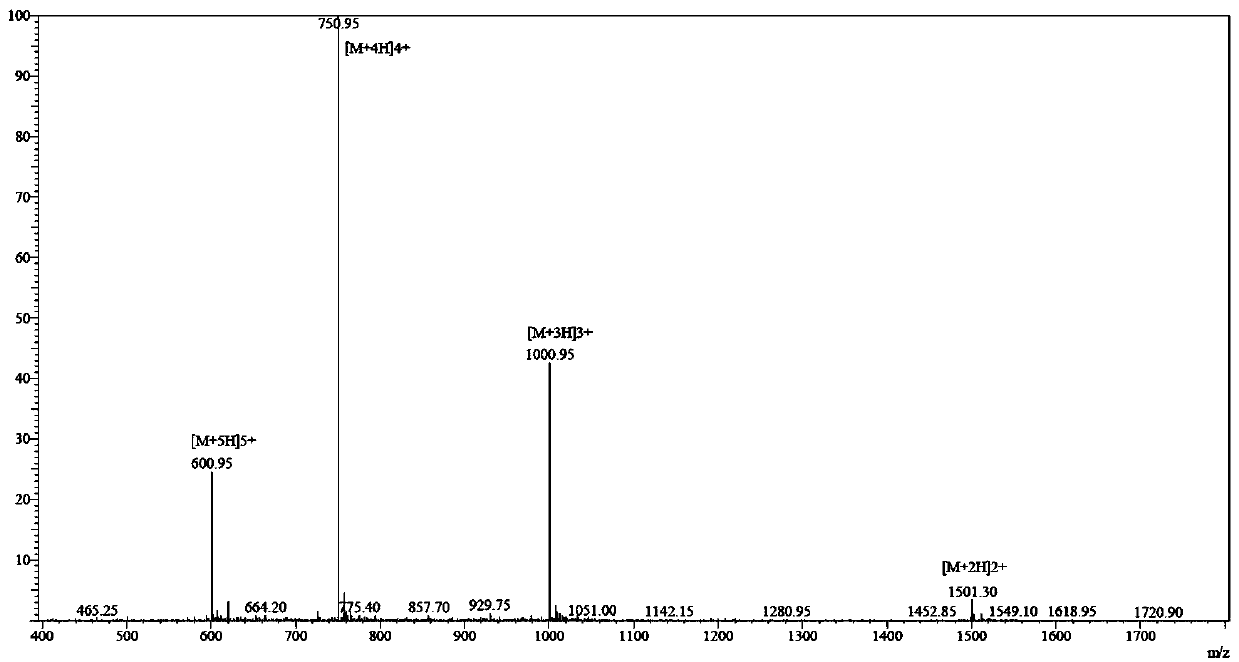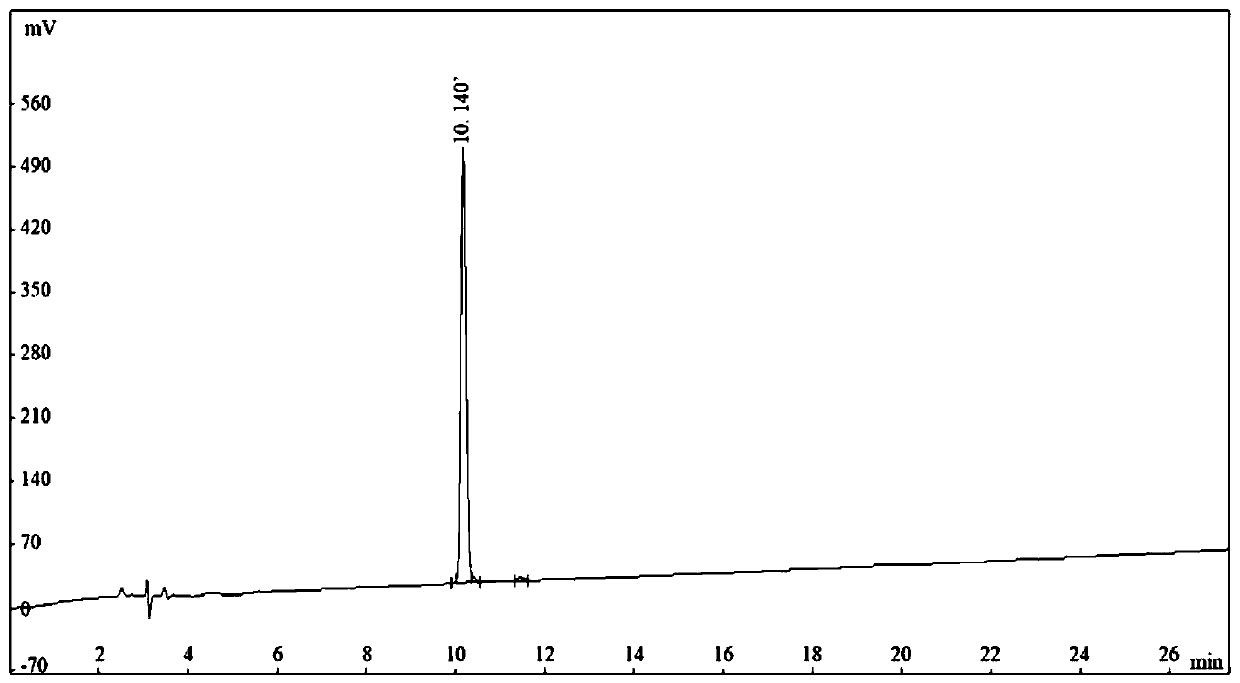Antibacterial polypeptide Pb2-1 or PCL-1 and preparation method and application thereof
A PCL-1, antibacterial polypeptide technology, used in antibacterial drugs, antifungal agents, chemical instruments and methods, etc., can solve problems such as poor stability and limitations, and achieve improved stability, reduced cost, and significant bactericidal effect. Effect
- Summary
- Abstract
- Description
- Claims
- Application Information
AI Technical Summary
Problems solved by technology
Method used
Image
Examples
Embodiment 1
[0044] Preparation of antibacterial polypeptide Pb2-1, PCL-1:
[0045] (1) Using the polypeptide CATHPb2 as a template, intercept the region where its sequence is conserved and the α-helix is highly concentrated, and intercept from the third position of the N-terminal to reduce the number of polypeptide amino acids from 29 to 13, and obtain the polypeptide Pb2- 1;
[0046] (2) An undecylcyclic peptide whose sequence is CWTKSIPPKPC, disulfide bonded into a ring, and has trypsin inhibitory activity is covalently linked to the N-terminal of Pb2-1 to obtain a polypeptide PCL- with an intramolecular disulfide bond 1.
[0047] (3) Polypeptides Pb2-1 and PCL-1 were synthesized by solid phase synthesis.
[0048] The amino acid sequence of the prepared Pb2-1 is: glycine-phenylalanine-arginine-lysine-phenylalanine-methionine-arginine-arginine-leucine-lysine - Lysine - Phenylalanine - Phenylalanine.
[0049] The amino acid sequence of the prepared PCL-1 is: cysteine-tryptophan-thre...
Embodiment 2
[0054] Determination of the purity (HPLC method) and mass spectrometry results of polypeptide Pb2-1 and PCL-1:
[0055] Example 1 Polypeptides Pb2-1 and PCL-1 were synthesized and purified to obtain finished products, which were identified by high performance liquid chromatography and mass spectrometry.
[0056] Liquid chromatography analysis conditions: C18 chromatographic column (4.6×250mm, 5 μm); mobile phase A is acetonitrile solution containing 0.1% trifluoroacetic acid, and mobile phase B is pure water containing 0.1% trifluoroacetic acid. The detection wavelength is 220nm; the flow rate is 1.0ml / min; the injection volume is 10μl, and gradient elution is performed. The elution condition is a linear gradient with increasing concentration: the initial concentration of the organic phase is 27%, which increases to 52% at 25 minutes, and the chromatographic column is washed with 100% organic phase from 25 minutes to 30 minutes.
[0057] attached by figure 1 , 3 It can be s...
Embodiment 3
[0060] Determination of antibacterial activity of polypeptide Pb2-1 and PCL-1 of the present invention in vitro
[0061] (1) Recovery and activation of strains
[0062] The experimental bacteria frozen at -20°C were transferred from the glycerol tube to the corresponding agar slant medium (bacteria were transferred to nutrient agar slant, fungi were transferred to Sabouraud dextrose agar slant). Bacteria were cultured at 37°C for 24 hours, fungi were cultured at 28°C for 48 hours, and placed in a refrigerator at 4°C for later use.
[0063] (2) Preparation of bacteria solution
[0064] Take a small amount of bacteria on the slant, transfer to 2ml of the corresponding liquid medium, place the bacteria at 37°C and the fungus at 28°C for 8 hours, and dilute to 10% with the corresponding liquid medium. 5 CFU / ml bacterial suspension, for later use.
[0065] (3) Drug preparation
[0066] Weigh the polypeptide Pb2-1 or PCL-1 prepared in Example 1 and dissolve them in normal saline...
PUM
 Login to View More
Login to View More Abstract
Description
Claims
Application Information
 Login to View More
Login to View More - R&D
- Intellectual Property
- Life Sciences
- Materials
- Tech Scout
- Unparalleled Data Quality
- Higher Quality Content
- 60% Fewer Hallucinations
Browse by: Latest US Patents, China's latest patents, Technical Efficacy Thesaurus, Application Domain, Technology Topic, Popular Technical Reports.
© 2025 PatSnap. All rights reserved.Legal|Privacy policy|Modern Slavery Act Transparency Statement|Sitemap|About US| Contact US: help@patsnap.com



